Bearish Divergences
December 2, 2006 5:30 p.m. AET (1:30 p.m. ET)
The Big Picture
January light crude rallied to $63.43/barrel, a long-term bullish sign. The dollar weakened to $1.33 against the euro and appears headed for a test of the early 2005 high of $1.37. Gold rallied to $645 and appears headed for a test of resistance at $675.
Probability of recession in the next four quarters remains at 43 per cent according to the Wright model. A rise above 50% would be cause for concern.
USA: Dow, NASDAQ & SP500
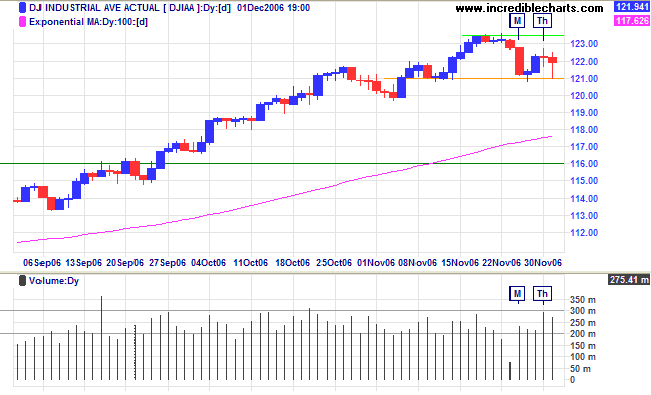
Long Term: The Dow is in a primary up-trend, with support at 10700.
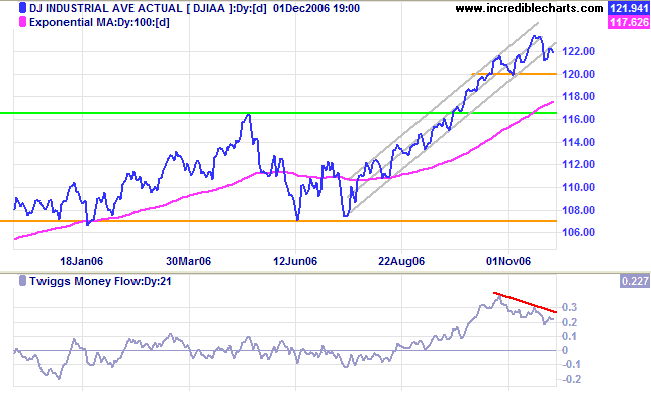
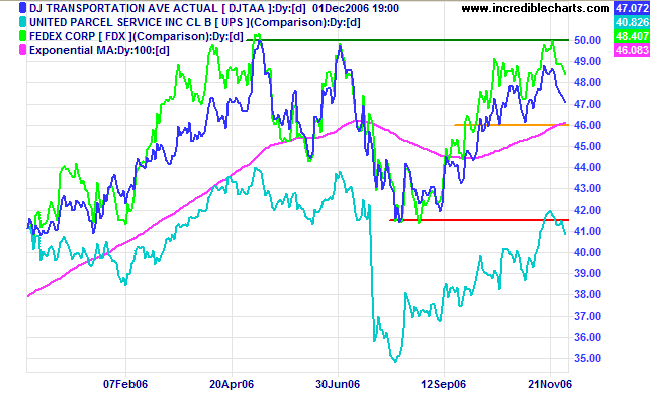
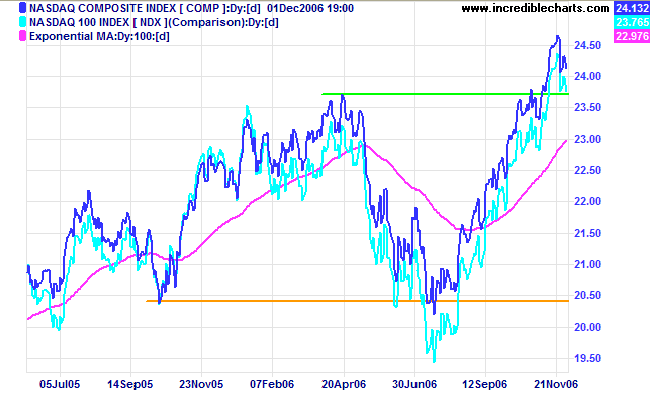
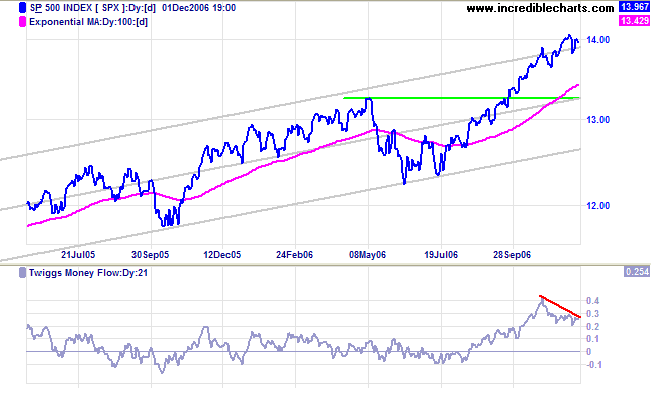
Long Term: The S&P 500 is in a primary up-trend, with support at 1220.
LSE: United Kingdom
Medium Term: Failure of support at 6000 would confirm that the index is undergoing a secondary correction. Twiggs Money Flow (21-day) below zero after a bearish triple divergence warns of strong distribution.
Long Term: The primary up-trend continues, with support at 5500, but the marginal new high (at 6250 compared to 6100 in April) is bearish.
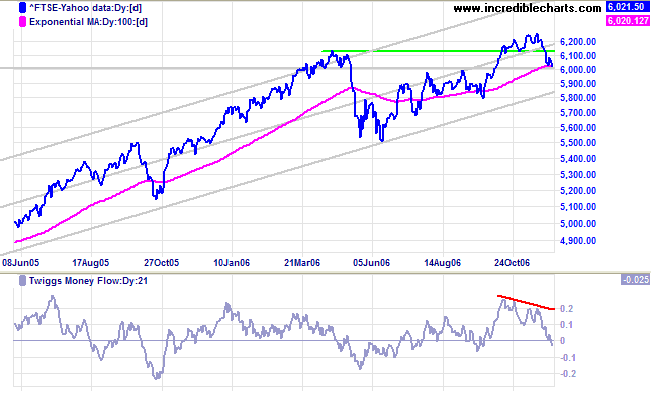
Nikkei: Japan
Medium Term: Twiggs Money Flow (21-day) recovered to above zero, but will only turn bullish if the next retracement respects the zero line. Penetration of support at 15500 would warn of a test of primary support at 14200.
Long Term: The index remains in a primary up-trend. Primary support will be weakened if the index fails to test its previous high of 17500.
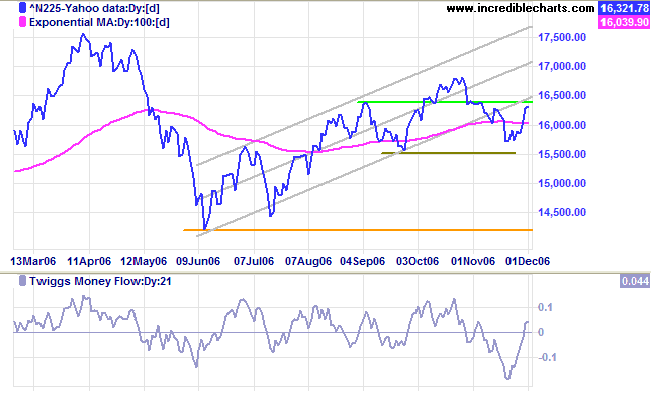
ASX: Australia
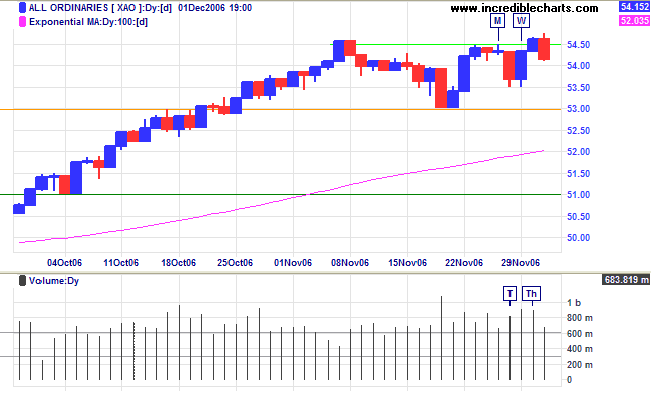
Long Term: The All Ordinaries remains in a primary up-trend with support at 4800.
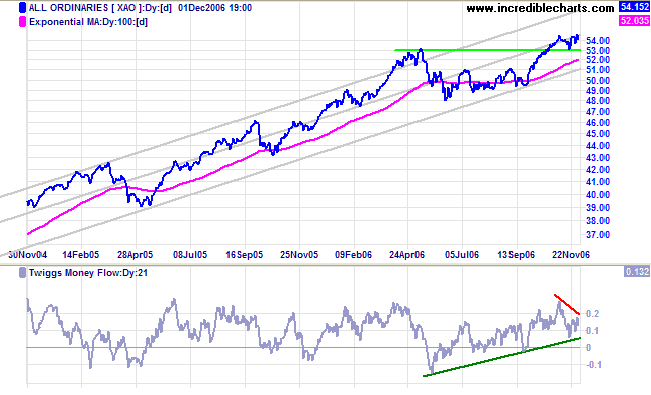
The actual, private object of the most skilled investment today is 'to beat the gun', as the Americans so well express it,
to outwit the crowd, and to pass the bad, or depreciating, half-crown to the other fellow......
Nor is it necessary that anyone should keep simple faith in the conventional basis of valuation having any genuine long-term validity.
For it is, so to speak, a game of Snap, of Old Maid, of Musical Chairs.......
~ John Maynard Keynes
|
Technical Analysis and Predictions I believe that Technical Analysis should not be used to make predictions because we never know the outcome of a particular pattern or series of events with 100 per cent certainty. The best that we can hope to achieve is a probability of around 80 per cent for any particular outcome: something unexpected will occur at least one in five times. My approach is to assign probabilities to each possible outcome. Assigning actual percentages would imply a degree of precision which, most of the time, is unachievable. Terms used are more general: "this is a strong signal"; "this is likely"; "expect this to follow"; "this is less likely to occur"; "this is unlikely"; and so on. Bear in mind that there are times, especially when the market is in equilibrium, when we may face several scenarios with fairly even probabilities. Analysis is also separated into three time frames: short, medium and long-term. While one time frame may be clear, another could be uncertain. Obviously, we have the greatest chance of success when all three time frames are clear. The market is a dynamic system. I often compare trading to a military operation, not because of its' oppositional nature, but because of the complexity, the continual uncertainty created by conflicting intelligence and the element of chance that can disrupt even the best made plans. Prepare thoroughly, but allow for the unexpected. The formula is simple: trade when probabilities are in your favor; apply proper risk (money) management; and you will succeed. For further background, please read About The Trading Diary. |

Author: Colin Twiggs is a former investment banker with almost 40 years of experience in financial markets. He co-founded Incredible Charts and writes the popular Trading Diary and Patient Investor newsletters.
Using a top-down approach, Colin identifies key macro trends in the global economy before evaluating selected opportunities using a combination of fundamental and technical analysis.
Focusing on interest rates and financial market liquidity as primary drivers of the economic cycle, he warned of the 2008/2009 and 2020 bear markets well ahead of actual events.
He founded PVT Capital (AFSL No. 546090) in May 2023, which offers investment strategy and advice to wholesale clients.
